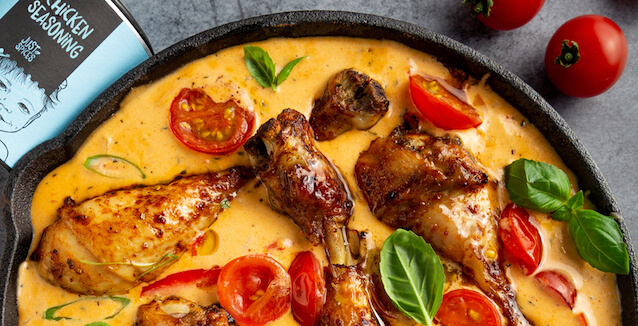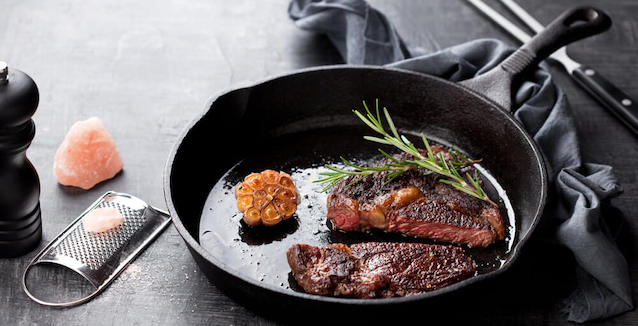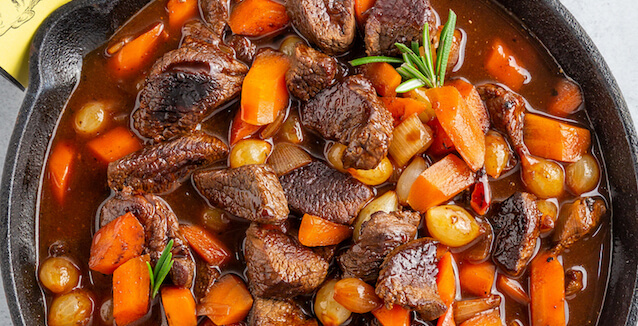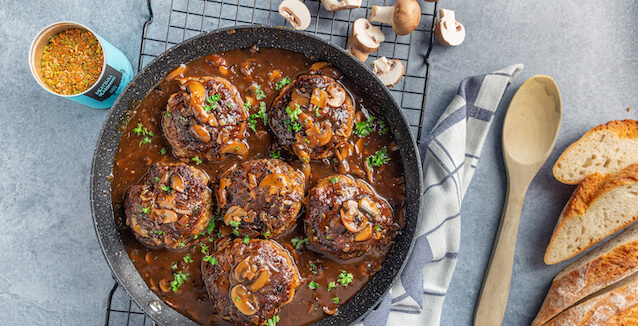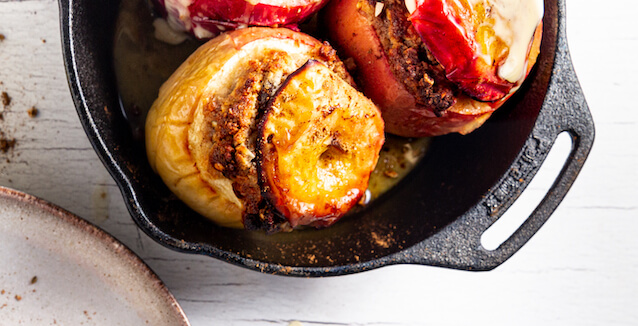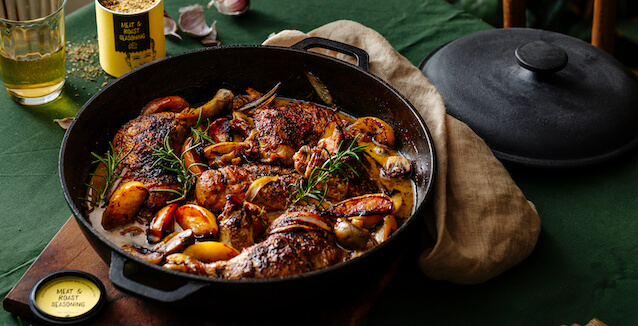
Cooking Basics
How to season cast iron
Learning how to season cast iron is vital in the kitchen to take your cooking to a whole new level. Despite our name, our seasoning expertise is not restricted to just herbs and spices. In this guide, we’ll teach you the art of cast-iron pan seasoning, exploring the reasons behind it, the process and how to maintain a non-stick surface. Let’s get started on your journey to becoming a cast-iron chef extraordinaire.
Cast-iron basics
Before we dive into seasoning your cookware, let’s take a moment to appreciate the charm and history of culinary cast iron. With the first woks made of cast iron in China around 200 BC, it has been a kitchen staple for centuries, known for its durability and exceptional heat retention. Their ability to distribute this heat evenly makes them ideal for a wide range of dishes, from sizzling steaks to apple cake. When cared for properly, you can be assured of legendary longevity.
Why should you season your cast-iron pan?
Let’s get down to business: why do you need to season your cast-iron pan? Seasoning is not just about flavour; it’s about extending the life of your pan and enhancing its performance.
Rust prevention: Without proper seasoning, your cast-iron pan is prone to rust. Seasoning it creates a protective layer, called a patina, to keep moisture at bay.
Improved non-stick properties: A well-seasoned pan is practically non-stick, reducing the need to cook with lots of oil.
Enhanced flavour: Over time, seasoning imparts a unique flavour to your dishes, making them taste even better.
Choosing the right oil for seasoning cast iron
There are various options available, but the key here is to choose an oil with an extremely high smoke point. These include:
Sunflower oil
Grapeseed oil
Vegetable oil
Coconut oil (not flavour-neutral)
Step-by-step guide to seasoning your cast-iron pan
Follow these instructions for a perfectly seasoned cast-iron pan with a beautiful patina.
Preheat the oven: Preheat your oven to 175°C while you prepare the pan.
Apply a thin layer of oil: Using a cloth or piece of kitchen roll, apply a thin, even coat of your chosen oil to the entire pan, including the handle and exterior.
Wipe off excess oil: Use a clean cloth to wipe off any excess, leaving the surface appearing dry.
Place upside down: Place the pan upside down on the middle oven rack, with a foil-lined baking tray on the shelf below to catch any drips.
Bake: Bake the pan for one to two hours, allowing the oil to polymerise and create that beautiful, shiny non-stick coating.
Cool: Turn off the oven, but leave the pan inside to cool off completely.
Repeat as necessary: You may need to repeat this process a few times to build up a really good patina.
Maintaining your seasoned cast-iron pan
Having worked so hard to achieve your glossy black patina, it’s imperative you now look after it.
Avoid washing-up liquid: After cooking, rinse your pan with hot water, using a brush or sponge to remove food particles. Don’t use washing-up liquid on it, as this will start to break down the seasoning.
Dry thoroughly: Dry your pan immediately after washing it to prevent rust. Place it either back on the stove over a low heat or in a warm oven to ensure it’s completely dry.
Re-season as necessary: If you notice the patina is wearing thin, ’tis the season to re-season. Follow the instructions above to restore it to its former glory.
Cooking with your seasoned cast-iron pan
It’s time to put that pan to good use! What foods are best for cooking in a cast-iron pan?
Steak: Searing a steak over high heat requires a heavy-duty pan up to the challenge, giving you buttery soft meat with a delicious crust. Try Garlic Pepper sprinkled on towards the end of cooking so it doesn’t burn.
Roast: Start your roast chicken off on the stove in your cast-iron pan to get the thigh meat cooking first, then transfer to the oven to cook the breast through. The pan is full of drippings and flavour for making gravy afterwards. Chicken Seasoning will have your bird tasting out of this world.
Bacon: Start off in a cold pan so the fat renders as it heats up, leaving you with crispy deliciousness.
Sauté potatoes: Once you’ve parboiled your spuds, add them to the pan with a slick of oil, a pat of butter and tonnes of Roast Potato Seasoning, then crisp to perfection.
Upside-down apple cake: Create a caramel in the pan by melting sugar, add your apple slices, then top with cake batter made with Sweet Allrounder. Bake in the oven till done, then turn out to cool. Perfect.
Chocolate chip cookie cake: Cast-iron pans were made for oven-to-table serving.
Recipes using a cast-iron pan
Try these delicious recipes, all perfect for your well-seasoned cast-iron pan.




